- Importance of Pumpkin Plants in Gardening
- Choosing the Right Pumpkin Varieties
- Growing Pumpkin Plants from Seeds
- Choosing the right seeds
- Starting seeds indoors
- Transplanting seedlings
- Providing care and maintenance
- Managing pests and diseases
- Pumpkin Plant Care and Maintenance
- Watering
- Fertilizing
- Weed Control
- Support and Training
- Pest and Disease Control
- Harvesting
- Storage
- Conclusion
- Common Issues and Pests Affecting Pumpkin Plants
- 1. Powdery Mildew
- 2. Root Rot
- 3. Squash Vine Borer
- 4. Cucumber Beetles
- 5. Fungal Diseases
- 6. Pest Control
- Harvesting and Preserving Pumpkins
- 1. Timing
- 2. Signs of Maturity
- 3. Harvesting
- 4. Curing
- 5. Storage
- 6. Preserving
- Using Pumpkins for Ornamental Purposes
- Carved Pumpkins
- Pumpkin Centerpieces
- Pumpkin Vases
- Pumpkin Luminary
- Pumpkin Displays
- Questions and answers
- How often do pumpkin plants need to be watered?
- Can pumpkin plants be grown in containers?
- What are some common diseases that affect pumpkin plants?
- How long does it take for a pumpkin plant to bear fruit?
- Can pumpkin plants be grown for ornamental purposes only?
- Video Unique idea, Recycle tires to grow pumpkins with high yield, super sweet at home
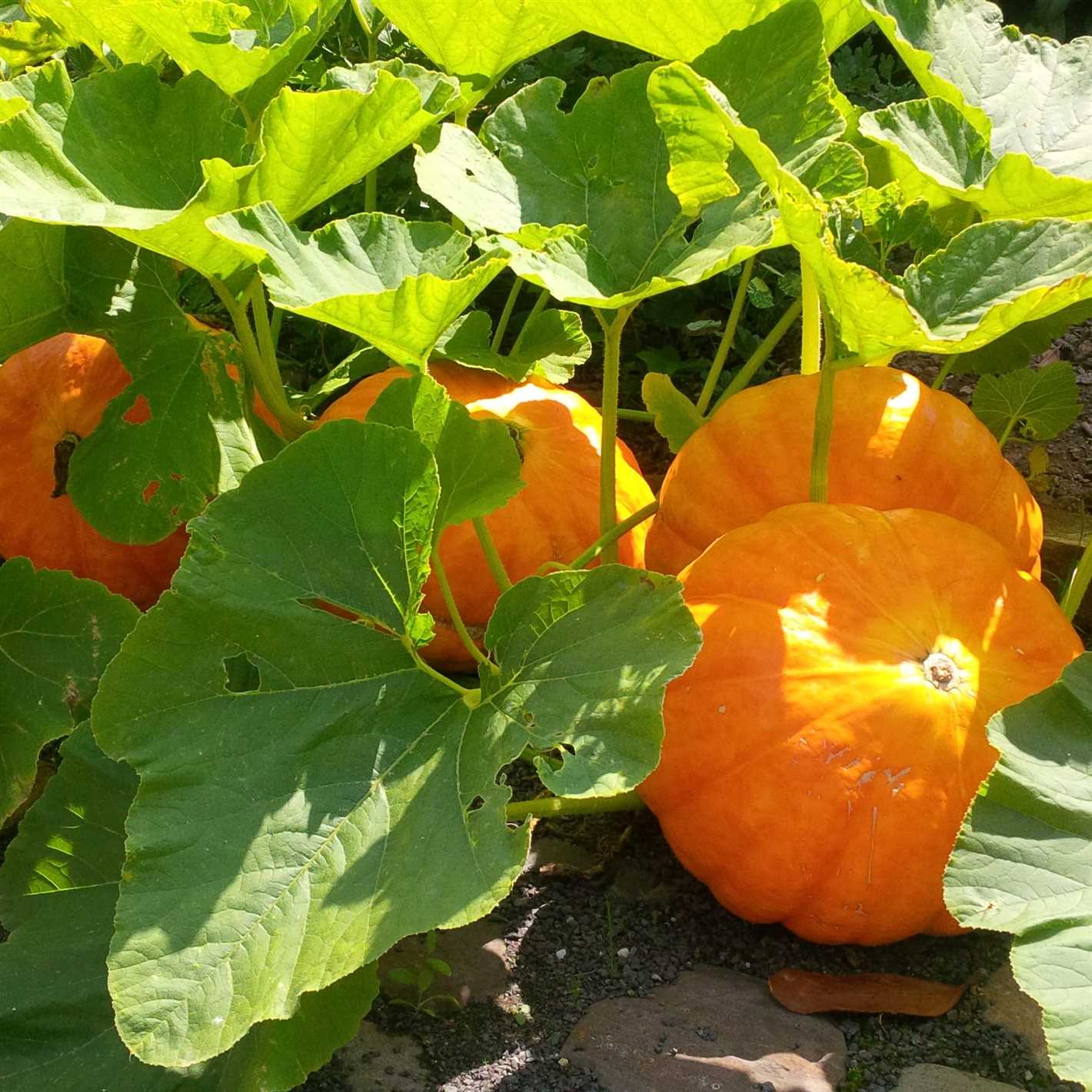
Whether you are a seasoned gardener or just starting out, pumpkin plants are a must-have in any garden. With their vibrant colors, delicious fruit, and versatility, these plants are both practical and ornamental. In this comprehensive guide, we will explore everything you need to know about pumpkin plants and how to grow them successfully.
Pumpkin plants are not only known for their delicious and nutritious fruit, but also for their stunning ornamental qualities. With their large, vibrant leaves and bright orange, yellow, and green colors, these plants can add a touch of beauty to any garden. Whether you want to create a festive fall display or simply enjoy the aesthetics of these plants, pumpkins are sure to impress.
When it comes to growing pumpkin plants, there are a few key factors to consider. First and foremost, these plants require full sun and well-drained soil. They also need plenty of space to spread out, as the vines can grow up to 20 feet long. Additionally, pumpkins are heavy feeders and will benefit from regular fertilization throughout the growing season.
In this guide, we will cover everything from selecting the right pumpkin variety for your garden to planting and caring for the plants. We will also discuss common pests and diseases that can affect pumpkin plants and how to prevent and treat them. Whether you are growing pumpkins for their fruit or for their ornamental value, this guide will provide you with all the information you need to succeed.
Importance of Pumpkin Plants in Gardening
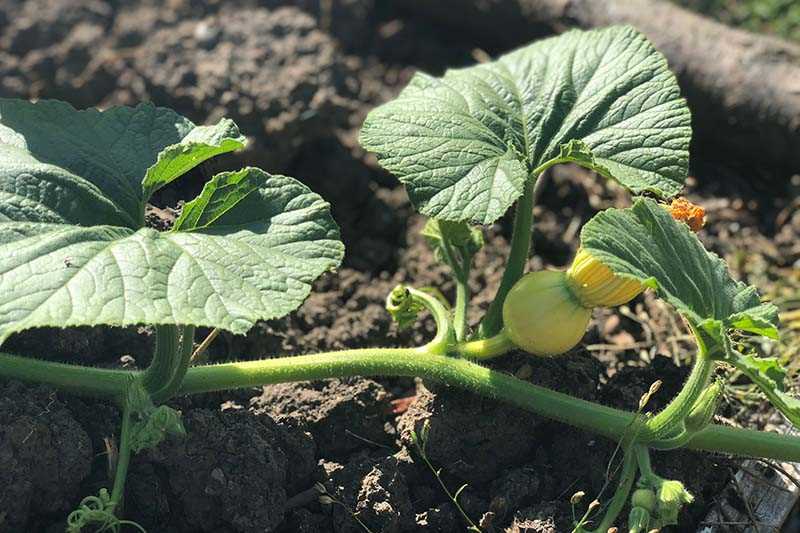

Pumpkin plants have significant importance in gardening for several reasons:
- Ornamental Value: Pumpkin plants are popular for their ornamental value. The vibrant colors and unique shapes of pumpkins add a touch of beauty and charm to gardens, making them a favorite choice for fall displays and Halloween decorations.
- Food Source: Pumpkins are not only aesthetically pleasing but also have practical applications. They serve as a nutritious food source that can be used in various culinary dishes. From soups and pies to bread and purees, pumpkins are versatile ingredients that add flavor and nutrients to recipes.
- Composting Material: Pumpkin plants can be composted to create nutrient-rich soil. Their organic matter, including the leaves, stems, and even the pumpkins themselves, can be added to a compost pile. As they decompose, they release nutrients that nourish the surrounding plants and improve soil fertility.
- Pollinator Attraction: Pumpkin plants produce bright yellow flowers, which attract bees and other pollinators to the garden. These pollinators play a crucial role in the reproduction of plants by transferring pollen from the male flowers to the female flowers. Through this process, pumpkin plants are able to produce fruits.
- Educational Tool: Growing pumpkin plants can be an educational experience for both children and adults. It provides an opportunity to learn about plant life cycles, gardening techniques, and the importance of pollinators. It also teaches patience, responsibility, and the rewards of nurturing a living thing.
In conclusion, pumpkin plants have great significance in gardening due to their ornamental value, food source, composting benefits, pollinator attraction, and educational value. They enhance the beauty of gardens, provide a harvest of nutritious food, contribute to fertile soil, support pollinators, and offer opportunities for learning and growth.
Choosing the Right Pumpkin Varieties
When it comes to choosing the right pumpkin variety for your garden, there are several factors to consider. The size, color, taste, and intended use of the pumpkin will all play a role in your decision. Here are some popular pumpkin varieties to consider:
Jack O’Lantern Pumpkins: These large pumpkins are perfect for carving and are commonly used as Halloween decorations. They have a round shape and can weigh up to 25 pounds. Some popular jack o’lantern varieties include ‘Howden’, ‘Big Max’, and ‘Cinderella’.
Small Sugar Pumpkins: If you’re looking for a pumpkin variety that is great for baking, small sugar pumpkins are a great choice. They have a sweet taste and a smooth texture, making them perfect for making pumpkin pie. ‘Baby Pam’, ‘New England Pie’, and ‘Rouge vif d’Etampes’ are popular small sugar pumpkin varieties.
Giant Pumpkins: If you’re after a pumpkin that will impress your neighbors, consider growing giant pumpkins. These massive pumpkins can weigh several hundred pounds and require special care and attention. Some popular giant pumpkin varieties include ‘Atlantic Giant’, ‘Dill’s Atlantic Giant’, and ‘Prizewinner’.
Ornamental Pumpkins: If you’re more interested in using pumpkins as fall decorations, ornamental varieties are perfect for you. These pumpkins come in a variety of unique shapes, sizes, and colors, making them perfect for creating fall displays. Some popular ornamental pumpkin varieties include ‘Jarrahdale’, ‘Blue Doll’, and ‘White Ghost’.
When selecting pumpkin varieties, make sure to consider your garden space, climate, and personal preferences. Whether you’re looking to carve a spooky jack o’lantern, bake a delicious pumpkin pie, or create a stunning fall display, there’s a pumpkin variety that’s perfect for you.
Growing Pumpkin Plants from Seeds
Starting pumpkin plants from seeds is a rewarding and enjoyable experience. By following a few simple steps, you can successfully grow healthy and productive pumpkin plants in your garden.
Choosing the right seeds
When selecting pumpkin seeds, it is important to choose varieties that are well-suited for your climate and growing conditions. Pay attention to seed packets and choose varieties that have a shorter maturity period if you have a shorter growing season.
Starting seeds indoors
You can start pumpkin seeds indoors about 2-4 weeks before the last frost date in your area. Fill seed trays or small pots with a high-quality seed starting mix. Plant 2-3 seeds in each pot, about 1 inch deep. Keep the soil consistently moist but not waterlogged.
Place the seed trays in a warm location with indirect sunlight or under grow lights. Maintain a temperature of around 70-80°F (21-27°C) to promote germination. The seeds should germinate within 7-10 days.
Transplanting seedlings
Once the seedlings have developed their first set of true leaves, they can be transplanted into larger pots or directly into the garden. If you are transplanting outdoors, wait until all danger of frost has passed and the soil has warmed up.
Choose a well-draining location with full sun for your pumpkin plants. Dig a hole that is slightly larger than the root ball of the seedling, gently place the seedling in the hole, and fill in with soil. Space the plants about 2-3 feet apart to allow for proper vine growth.
Providing care and maintenance
Pumpkin plants require regular watering to keep the soil evenly moist, especially during hot and dry periods. Avoid overwatering, as it can lead to rot and other problems.
Apply a layer of mulch around the plants to help conserve moisture and control weeds. Fertilize the plants with a balanced fertilizer according to package instructions, generally every 2-3 weeks.
Managing pests and diseases
Keep an eye out for common pumpkin pests such as squash bugs, vine borers, and cucumber beetles. Regularly inspect the plants for any signs of damage and take appropriate measures, such as handpicking or using organic pesticides, to control them.
Prevent diseases by providing good air circulation and avoiding overhead watering. If you notice any signs of disease, such as powdery mildew or rot, promptly remove the affected leaves or fruits to prevent further spread.
By following these steps and providing proper care, you can enjoy a bountiful harvest of pumpkins from your own garden.
Pumpkin Plant Care and Maintenance
Watering
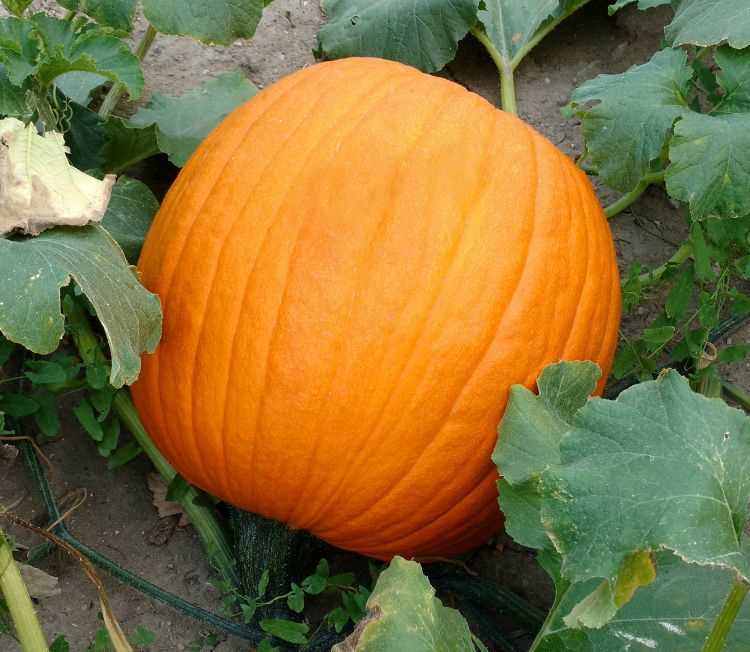

Pumpkin plants require regular watering to ensure healthy growth and fruit development. It is important to water deeply, providing enough moisture to penetrate the root zone. Ideally, the soil should be kept consistently moist but not waterlogged. As a general rule, aim to provide about 1-2 inches of water per week.
Fertilizing
Fertilizing pumpkin plants is crucial to promote optimal growth and fruit production. Before planting, incorporate organic matter such as compost or well-rotted manure into the soil. Additionally, apply a balanced fertilizer, rich in nitrogen, phosphorus, and potassium, when the plants begin to vine. Follow the manufacturer’s instructions for application rates and frequency.
Weed Control
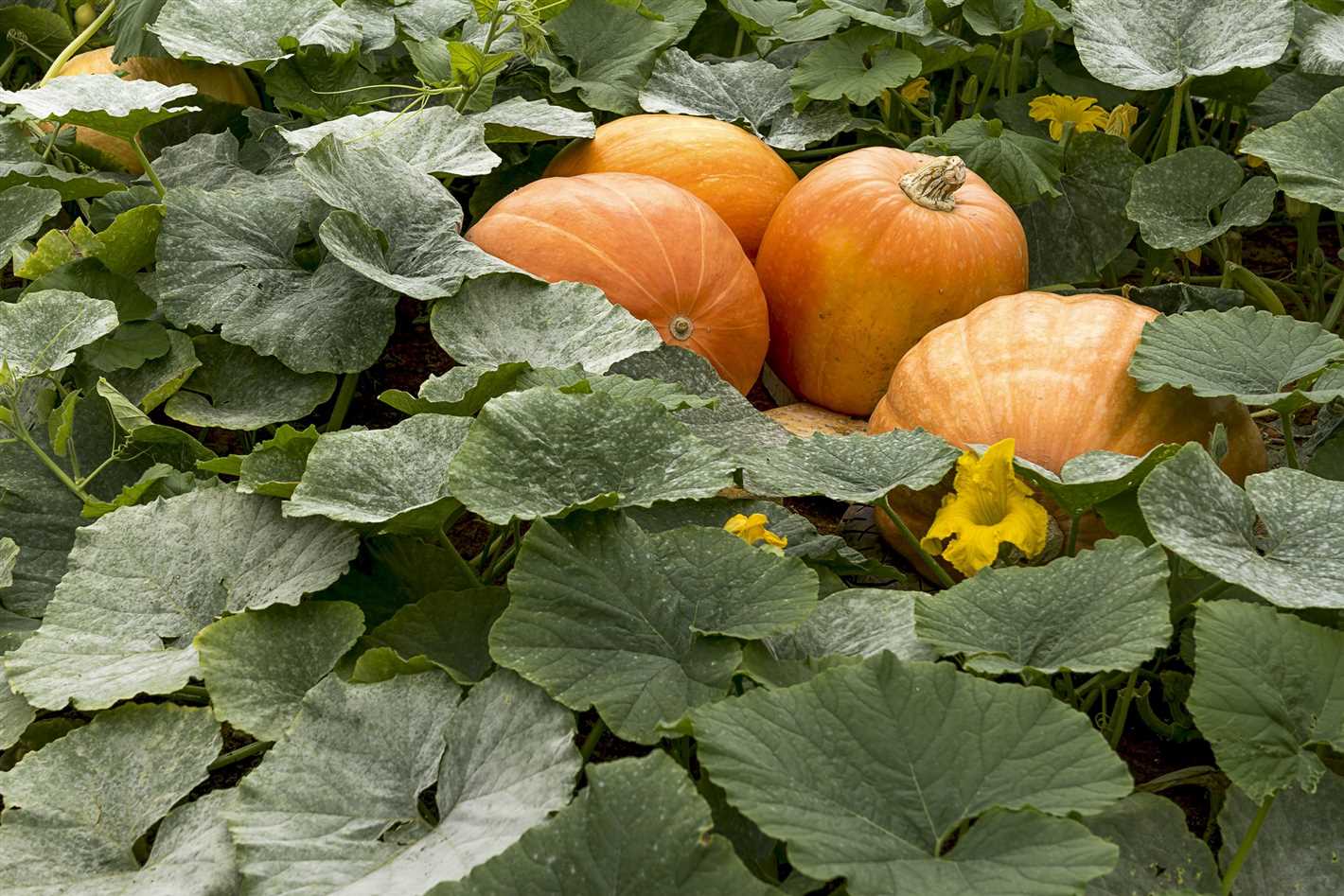

Weeds can compete with pumpkin plants for nutrients, water, and sunlight. To prevent weed growth, it is important to regularly remove any weeds that appear around the pumpkin plants. Mulching around the plants can also be beneficial in suppressing weed growth and conserving soil moisture.
Support and Training
Pumpkin plants are vigorous climbers and can benefit from some form of support or training. As the vines grow, gently guide them to climb onto a trellis, fence, or other support structure. This will help to keep the plant organized, prevent sprawling, and provide better air circulation, which can reduce the risk of disease.
Pest and Disease Control
Pumpkin plants are susceptible to various pests and diseases, including aphids, squash bugs, powdery mildew, and bacterial wilt. Regularly inspect the plants for any signs of infestation or disease and take appropriate measures to control them. This can include using organic insecticides, practicing crop rotation, and maintaining good garden hygiene.
Harvesting
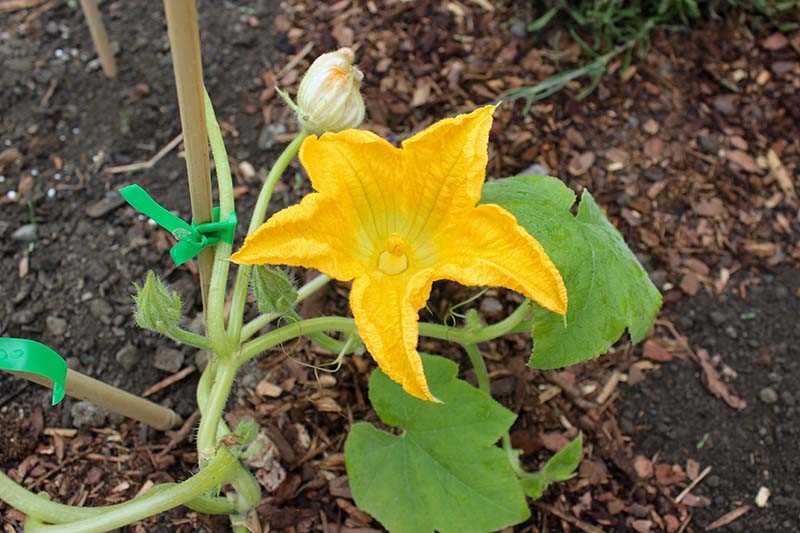

Pumpkins are ready to be harvested when their rinds are hard and cannot be easily pierced with a fingernail. The stem should also be fully dry and starting to crack. Use a sharp knife or pruning shears to cut the pumpkins from the vine, leaving a short section of stem attached. Handle the pumpkins carefully to avoid any damage, as this can shorten their shelf life.
Storage
Pumpkins can be stored for several months if properly cured and stored in a cool, dry place. After harvesting, allow the pumpkins to cure in a warm, sunny spot for about 10 days. Then, wipe off any dirt and place them in a single layer on a wooden pallet or cardboard. Make sure to keep them away from moisture and direct sunlight to prevent rotting.
Conclusion
With proper care and maintenance, you can enjoy a bountiful harvest of pumpkins. Remember to water consistently, fertilize regularly, control weeds, provide support, and stay vigilant for pests and diseases. With attention to these essential tasks, you can grow healthy and vibrant pumpkin plants in your garden.
Common Issues and Pests Affecting Pumpkin Plants
Pumpkin plants are susceptible to a variety of issues and pests that can hinder their growth and fruit production. It is important for gardening enthusiasts to be aware of these common problems and take appropriate measures to prevent or address them.
1. Powdery Mildew
Powdery mildew is a common fungal disease that affects pumpkin plants, especially in humid conditions. It appears as a white, powdery coating on the leaves, stems, and fruits of the plant. To prevent powdery mildew, ensure proper air circulation by spacing plants adequately and avoiding overhead watering.
2. Root Rot
Root rot is caused by overwatering or poorly draining soil, leading to the decay of the pumpkin plant’s root system. Symptoms of root rot include wilting, stunted growth, and discolored roots. To prevent root rot, make sure the soil is well-draining and water the plants only when necessary.
3. Squash Vine Borer
The squash vine borer is a common pest that attacks pumpkin plants. The adult borer lays eggs at the base of the plant, and the larvae feed on the stem, causing wilting and eventual death. To control squash vine borers, regularly check the base of the plant for eggs or larvae and remove them if found.
4. Cucumber Beetles
Cucumber beetles are pests that feed on pumpkin plants, causing damage to leaves, stems, and fruits. They can spread bacterial wilt disease, which can be fatal to the plant. To control cucumber beetles, use row covers to exclude them from the plants or apply insecticides if necessary.
5. Fungal Diseases
Pumpkin plants are susceptible to various fungal diseases, such as anthracnose and downy mildew. These diseases can cause leaf spots, fruit rot, and overall decline of the plant. To prevent fungal diseases, avoid overhead watering, provide adequate spacing between plants, and remove infected plant material.
6. Pest Control
In addition to specific pests mentioned above, pumpkin plants can attract a range of other pests, including aphids, spider mites, and slugs. Regularly inspect the plants for any signs of pest infestation and take appropriate measures, such as handpicking, using organic insecticides, or introducing beneficial insects.
By understanding and addressing these common issues and pests, gardening enthusiasts can ensure the health and productivity of their pumpkin plants. Regular monitoring, proper cultural practices, and timely intervention will help maintain a thriving pumpkin garden.
Harvesting and Preserving Pumpkins
Harvesting pumpkins at the right time is crucial to ensure they are mature and flavorful. Here are some tips on when and how to harvest your pumpkins:
1. Timing
Most pumpkins are ready to be harvested when they reach their full color and the rind becomes hard. The exact timing can vary depending on the variety, so it’s recommended to check the seed packet or do some research to determine the optimal harvest time for your specific pumpkin variety.
2. Signs of Maturity
Some common signs of a mature pumpkin include a hard rind that resists puncture with a fingernail, a dull rather than shiny skin, and a full, deep color. Additionally, the stem of a mature pumpkin should be dry and starting to shrivel.
3. Harvesting
To harvest a pumpkin, cut the stem carefully with a sharp knife or pruners, leaving about 2-3 inches of stem attached to the fruit. Be sure to handle the pumpkins gently to avoid any damage that may lead to rot during storage.
4. Curing
After harvesting, the pumpkins should be cured for about 10 days to toughen the skin and improve their storage potential. Place them in a warm and dry location with good air circulation, such as a sunny spot in your garden or a well-ventilated shed.
5. Storage
Once cured, pumpkins can be stored for several months in a cool and dry place. Ideal storage conditions include temperatures around 50 to 55°F (10 to 13°C) and relative humidity levels of 50-70%. Avoid storing pumpkins near apples or other fruits, as they emit ethylene gas that can accelerate ripening and spoilage.
6. Preserving
If you’d like to preserve your pumpkins for longer or use them for decorative purposes, there are a few methods you can try:
- Freezing: Cut the pumpkin into chunks, remove the seeds and strings, and then blanch the pieces in boiling water for a few minutes. After blanching, shock them in ice water, drain well, and place in airtight freezer bags or containers.
- Canning: Pumpkin can be canned as a puree or in chunks. Follow a trusted canning recipe and use proper canning techniques to ensure safety and shelf stability.
- Dehydrating: Slice the pumpkin into thin pieces, remove the seeds and strings, and then dehydrate the slices until they are completely dry. Store the dried pieces in an airtight container.
By following these guidelines, you can successfully harvest and preserve your pumpkins, allowing you to enjoy their delightful and versatile qualities throughout the year!
Using Pumpkins for Ornamental Purposes
Pumpkins are not only a staple food during the fall season, but they also make beautiful additions to your home decor. Whether you are hosting a Halloween party or simply want to add a festive touch to your front porch, pumpkins can be used in various ways for ornamental purposes.
Carved Pumpkins
Carving pumpkins is a classic Halloween activity that allows you to showcase your creativity. By removing the top, scooping out the insides, and carving a design into the flesh, you can create a unique and eye-catching pumpkin display. From simple smiley faces to intricate patterns, the options are endless.
Pumpkin Centerpieces
Pumpkins can also be used as centerpieces for your dining table or mantel. Simply hollow out a small pumpkin, place a waterproof container inside, and fill it with flowers or other decorative elements. This not only adds a touch of elegance to your space but also brings a natural and seasonal element to your decor.
Pumpkin Vases
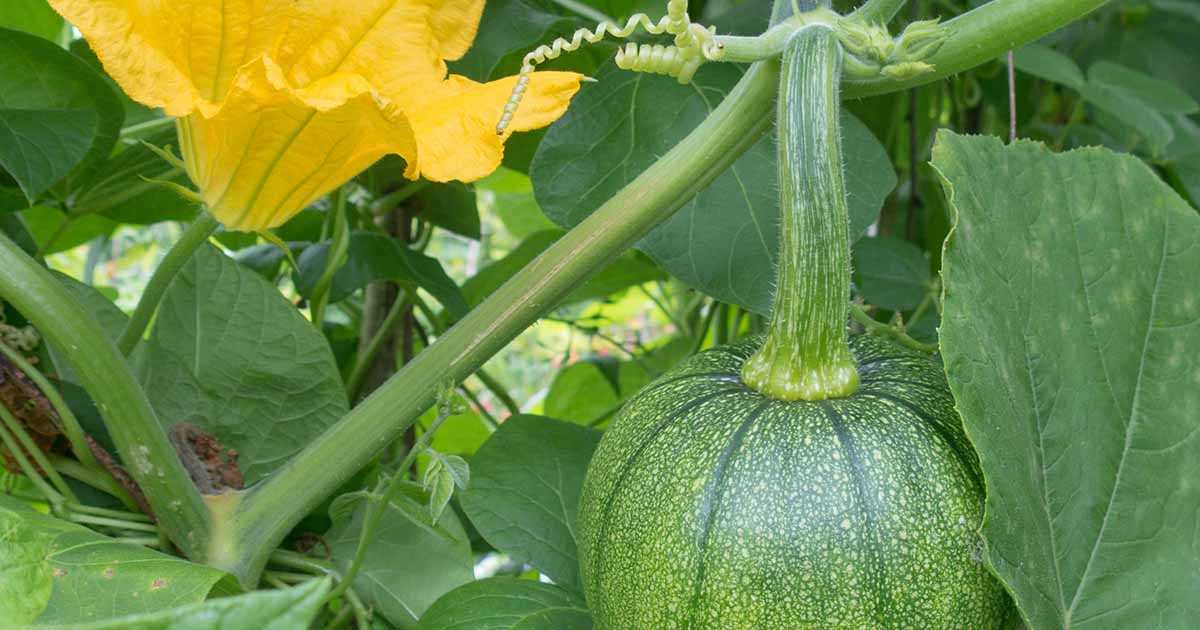

If you have larger pumpkins, you can transform them into rustic vases. Cut off the top, remove the insides, and insert a glass or plastic vase. Fill the vase with water and arrange your favorite flowers or branches. This creates a charming and unique floral display that is sure to impress your guests.
Pumpkin Luminary
Add a cozy and enchanting atmosphere to your outdoor space by turning pumpkins into luminaries. Simply carve small holes or designs into the pumpkin and place a battery-operated candle or LED light inside. This will create a warm and inviting glow that is perfect for Halloween or any other festive occasion.
Pumpkin Displays
Don’t limit yourself to just one pumpkin. Create stunning displays by arranging pumpkins of various sizes, shapes, and colors. You can place them on your front porch, stack them in a pyramid, or even create a pumpkin tower. Mix in some decorative gourds, hay bales, and cornstalks for added interest.
Remember to always choose pumpkins that are firm and free from any signs of decay when using them for ornamental purposes. With a little creativity and imagination, pumpkins can be transformed into beautiful and festive decorations that will bring joy and charm to your home.
Questions and answers
How often do pumpkin plants need to be watered?
Pumpkin plants should be watered regularly, about once a week. However, the frequency may vary depending on the weather conditions and the type of soil. It is important to keep the soil moist, but not overly saturated.
Can pumpkin plants be grown in containers?
Yes, pumpkin plants can be grown in containers. It is recommended to choose a container with at least a 5-gallon capacity to allow enough space for the plant’s roots to grow. Ensure that the container has proper drainage and provide support for the vines as they start to grow.
What are some common diseases that affect pumpkin plants?
Some common diseases that affect pumpkin plants include powdery mildew, downy mildew, and black rot. These diseases can cause discoloration, wilting, and rotting of the leaves, stems, and fruits. It is important to regularly inspect the plants for signs of disease and take appropriate measures such as applying fungicides or removing infected plants to prevent the spread.
How long does it take for a pumpkin plant to bear fruit?
The time it takes for a pumpkin plant to bear fruit can vary depending on the variety and growing conditions. On average, it takes about 90 to 120 days for a pumpkin plant to produce mature fruits. The fruiting usually starts after the plant has matured and developed both male and female flowers.
Can pumpkin plants be grown for ornamental purposes only?
Yes, pumpkin plants can be grown for ornamental purposes only. They are often grown as decorative plants for their vibrant orange color and unique shapes. These ornamental pumpkins are typically smaller in size and are not typically used for cooking. They can be used for making autumn displays, centerpieces, or Halloween decorations.







